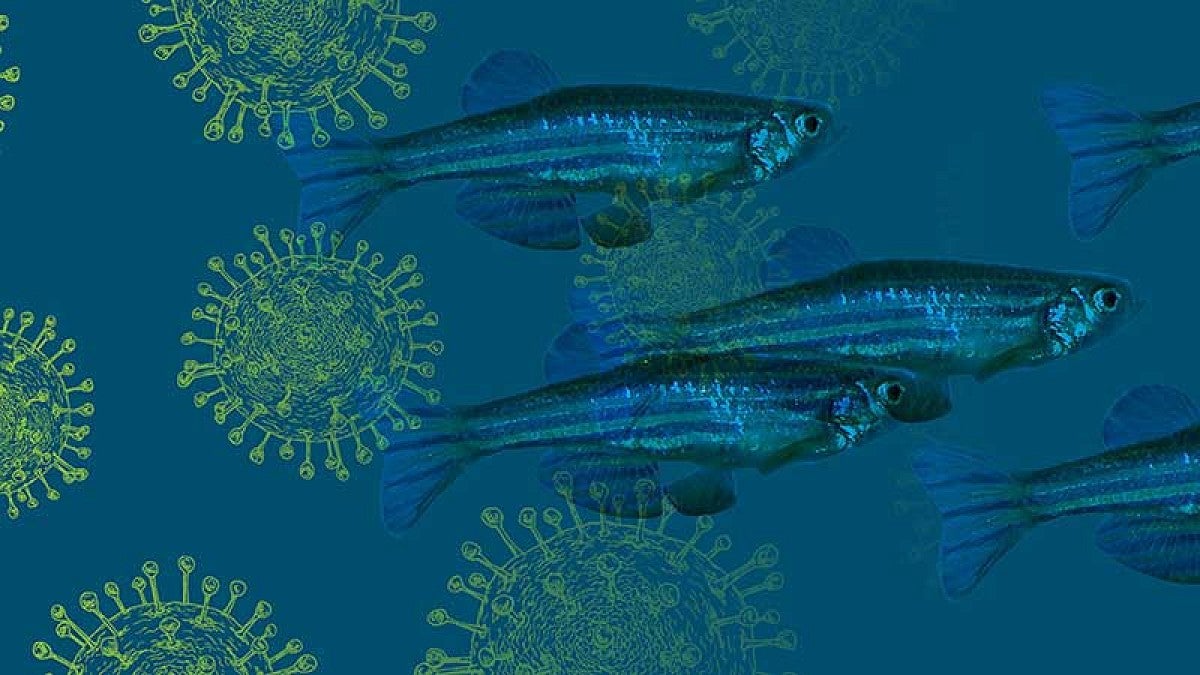The question of why COVID-19 disproportionately affects patients with cardiovascular disease, diabetes and obesity is at the heart of a new study by researchers in the lab of UO biologist John Postlethwait.
Funded by a $350,000 supplemental grant from the National Institutes of Health, the study builds on an existing NIH grant examining regions of the human genome that are linked to disease.
“COVID-19 is such a huge problem that it requires a lot of different possible solutions,” Postlethwait said. “We thought that we could provide a unique approach and could offer useful basic information for design of therapeutics.”
Postlethwait’s team is developing new zebrafish animal models in an effort to better understand a mechanism involving a pair of proteins, one of which serves as a receptor for the coronavirus. The mechanism helps explain an “inflammatory storm” that can occur in coronavirus patients with preexisting conditions and ultimately make them more likely to die of the illness.
The mechanism of interest to Postlethwait’s team involves a small peptide known as angiotensin II. The compound is essential for human survival, but in high amounts it’s linked to high blood pressure, diabetes, obesity and other conditions.
A protein called Ace1 is responsible for producing angiotensin II, and a protein called Ace2 is responsible for removing angiotensin II. Together the two proteins function like a faucet and drain in a sink, respectively, serving to control the rate in and rate out of angiotensin II.
In addition to getting rid of the harmful angiotensin II, it turns out that Ace2 has another function, serving as the receptor for the coronavirus. In the familiar “spiky ball” images of the coronavirus, the spikes are proteins that bind to the Ace2 protein. And because Ace1 is responsible for the angiotensin II compound that creates all those problems in coronavirus patients with preexisting conditions, the two proteins, Ace1 and Ace2, both play key roles in bringing about those harmful effects.
Together Ace1 and Ace2 have a reciprocal relationship that Postlethwait likens to a teeter-totter. As Ace1 numbers increase, Ace2 numbers decrease and vice versa. The balancing act breaks down in some with preexisting conditions. For example, many people with high blood pressure take Ace1 inhibitors to control their condition, but Postlethwait said if you turn down the amount of Ace1, you turn up the amount of Ace2.
“That would seem like a good outcome in that you don’t have as much angiotensin II, the harmful peptide, but then you have a lot more of the virus receptor, so then that might make it easier for you to get infected,” Postlethwait said.
Scientists first noticed the relationship between Ace1 and Ace2 some half-decade ago, long before the COVID-19 pandemic. Then in early 2020, as the coronavirus outbreak began, investigators noted Ace2’s role as a virus receptor and researchers like Postlethwait soon saw the virus’ co-morbidities and connected them to the angiotensin II signaling mechanism.
“It’s kind of fascinating that it worked out that way,” Postlethwait said.
Postlethwait’s team — which includes research assistants Catherine Wilson and Yi-Lin Yan at the UO and Ingo Braasch, a former UO postdoctoral scholar who is now an assistant professor at Michigan State University — is building on an existing 16-year NIH grant. The original proposal was to study regions of the human genome that are linked to human disease but are not yet understood.
By finding those same regions in zebrafish, which share 70 percent of the genes humans have, and then creating mutations in zebrafish to make those regions inoperative, researchers can determine the role played by those disease-causing agents.
For their new research supplemental grant, the team is narrowing the focus to regions of the genome that are important for COVID-19. They have made mutations in Ace1 and Ace2 genes to knock out their functionality and determine how genes are changing their expression as a result. The hope, Postlethwait said, is to understand the Ace1/Ace2 mechanism enough to bring down the amount of Ace1 without causing a spike in Ace2.
“If we understand the mechanism that causes Ace2 to go up when Ace1 goes down and vice versa, we might be able to make therapies that could help,” Postlethwait said. “If you can break the teeter-totter and still bring down Ace2, the virus receptor, then you would then have the best of both worlds.”
—By Lewis Taylor, University Communications


